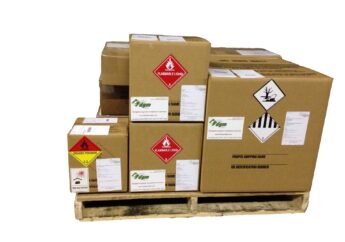Why You Should Consider Sustainability in Commercial Snow Removal
by Abdul Aziz Mondal Management Published on: 30 January 2021 Last Updated on: 26 December 2024

The most environmentally-friendly method of handling snow and ice is, of course, to do nothing with it at all. Unfortunately, inaction isn’t a practical or wise option for commercial facility managers due to self-evident safety and legal risks. Therefore, something must be done to keep our sidewalks and roads safely navigable during the winter months. As of yet, there is no perfect solution to the environmental concerns of snow removal practices. However, a few product alternatives and techniques will at least minimize the negative impact on the environment. Stay informed on snow and ice removal practices that protect the Earth and don’t cost you in unforeseen ways.
The Real Cost of Rock Salt
What exactly is rock salt? Salt can be composed of different compounds, the main ones being chloride (hydrochloric acid) and acetate (acetic acid). Even though chloride is known in the Commercial Snow Removal industry as the worst pollutant due to its lack of biodegradability, both chloride and acetate cause similar effects on the soil and water. When these salts run off the roads, they dry out the soil and prevent surrounding plants from absorbing water and nutrients. If they slip into the waterways, they create a reduction in oxygen-retention in the water, which effectively kills off aquatic life, causes deformities in marine and amphibious creatures, and increases harmful algae growth. Salted roads are also attributed to increased roadkill of deer and other wildlife attracted to salt licks.
As if the impact on animals and plants weren’t enough, rock salts inflict damage on the property as well. Over time, chlorides will erode and corrode concrete, asphalt, steel, and other architectural materials. As a result, your roads, sidewalks, walls, and interior floors of your building will be at greater and greater risk with each salting and each winter season. Even though rock salt is typically less expensive than most green products, it may cost your business more to repair the structural damage, wilted landscaping, and stormwater runoff that it causes every spring. Add your estimated cost of damage to your current budget for salt, and then compare this to the cost of other green products and techniques. Is it financially and environmentally worth it to your business to make the switch?
Environmentally-Conscious Solutions
Chloride-free options
Salted ice can be just as dangerous as non-salted ice if pedestrians and drivers assume that an area is safe just because of the visible presence of salt. In fact, it can take up to twenty minutes until the ice melts from rock salt, making it deceptively treacherous to the unknowing eye. What if there were a product that melted ice upon impact? Thankfully, such a thing does exist in the form of chloride-free liquid de-icers, which spray onto the ice and instantly melt it. The fact that these de-icers do not comprise chloride, the most destructive component of salt, puts them at the top of the list of environmentally-conscious snow and ice removal solutions. Since chloride-free de-icers tend to be more expensive than traditional salts, consider using them in limited amounts, reserved only for high-traffic areas around your building.
Reduced salt options
There is a trend in the snow and ice removal world where businesses and individuals expect to feel the crunch of salt underneath their feet. However, the massive amount of salt required to achieve this aesthetic effect is unnecessary to the practical aim of melting the ice. The overuse of salt is both wasteful and harmful to the environment. The responsible thing to do when you have no other option than chloride is to measure the minimum amount of salt needed to get the job done. Treating your pavements with salt before the weather event is another smart tactic for reducing your salt use.
Rock salt is ineffective for retaining water’s liquid form in temperatures lower than 15 degrees Fahrenheit. Nonetheless, the considerably lower freezing point of brines, compared to regular water, makes them an appropriate option for ice removal as long as temperatures don’t drop below 15 degrees. A brine is a liquid saltwater mixture that uses significantly less salt than solid rock salt. Many cities across the U.S. have taken to the especially environmentally-friendly brines of pickles, beets, and cheese.
As new research becomes available from the Environmental Protection Agency, the commercial snow removal industry will continue to adapt its techniques and products. Are you committed to upholding your company’s mission to make environmentally-conscious decisions in all aspects of your business? Are you aware of the real costs of using traditional salts, both ethically and financially? If so, then it’s time to re-evaluate your snow and ice removal practices and work with commercial snow removal services that keep pace with what’s sustainable for the Earth.
Read Also:





































































































